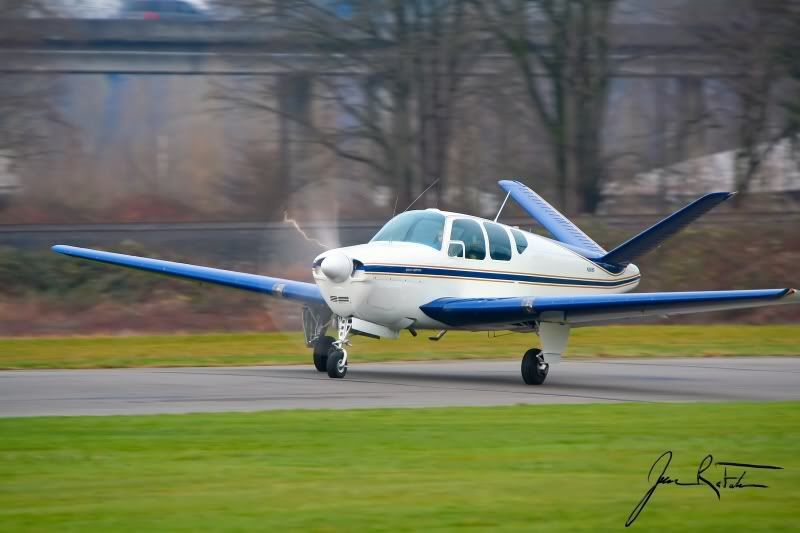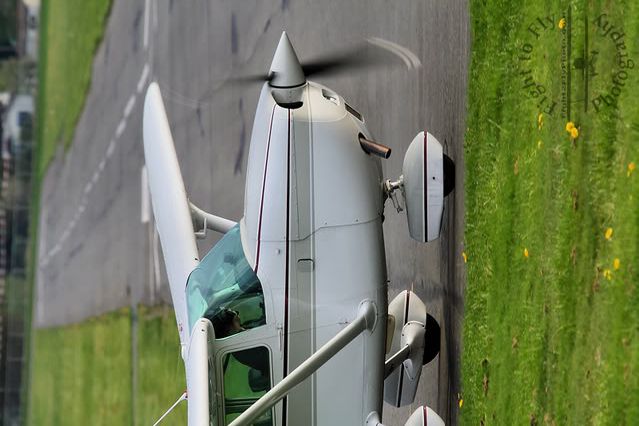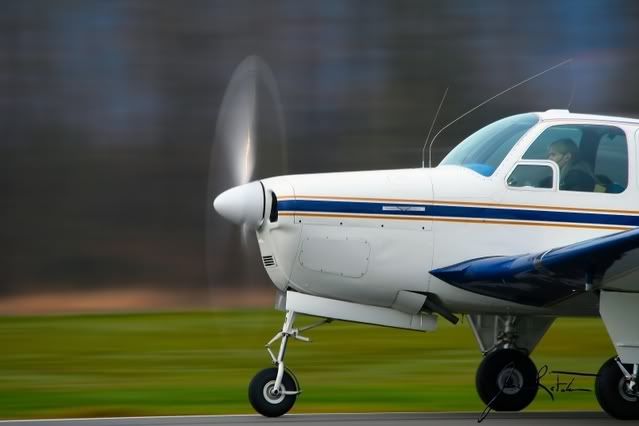This post is for those of you with a camera which allows the shutter speed to be set by the user. When it comes to aviation photography many people natually think you want the fastest shutter speed possible to stop the action. This is only partially true. For jets, I generally shoot in Aperture Priority mode (Av) and when using my Sigma 50-500mm I try to keep it right at F/8. This seems to give me the sharpest pictures and is still reasonably fast even in poor weather conditions. On bright days I take advantage of exposure compensation to help ensure no light-colored areas get over-exposed. Since there are no moving parts on the jets (other than control surfaces of course) there really isn't that much of a need to blur anything on the aircraft. Even when it is close to the ground the jet is still moving fast enough to have a good bit of motion blur in the background, even at high shutter speeds.
Propeller driven aircraft and helicopters are another story. These you actually want to use a slow shutter speed (no faster than 1/125 second!) so that you can see at least a partial blurring of the propeller/rotor blades. Shooting at this speed requires a great bit of panning skills and requires a lot of practice in order to become consistant. The general rule of thumb in photography regarding blurring by camera shake is to use a shutter speed equal to the length of the lens. So when I'm shooting at the 500mm end of my lens I should shoot no slower than 1/500 second to eliminate camera shake. Needless to say that isn't really an option when trying to catch a full arc of rotation on a propeller driven aircraft. One piece of equipment that may help you out is a monopod. Just like a tripod but - you guessed it - it only has one leg. This makes live as an aviation photographer much easier - especially if your lens doesn't have some sort of stabilizing feature.
 The picture above shows the full arc of rotation as a Beech Bonanza begins its takeoff roll at full power. This was shot with my Sigma 50-500mm lens in Shutter Priority (Tv) mode at 1/60 second.
The picture above shows the full arc of rotation as a Beech Bonanza begins its takeoff roll at full power. This was shot with my Sigma 50-500mm lens in Shutter Priority (Tv) mode at 1/60 second.
 This picture shows only a partial blur of the propeller as this Cessna 172 taxis out to the runway at low power. This was shot at a shutter speed of 1/125.
This picture shows only a partial blur of the propeller as this Cessna 172 taxis out to the runway at low power. This was shot at a shutter speed of 1/125.


No comments:
Post a Comment